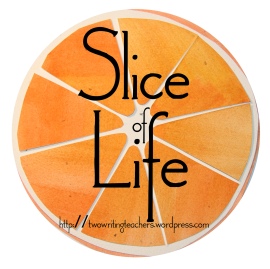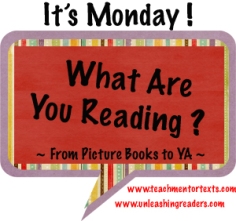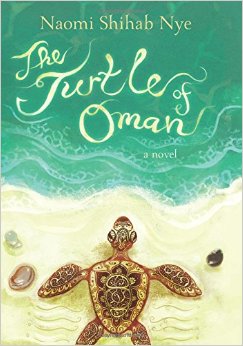Yesterday, in an effort to get everyone home safely before the snow began, we had an early dismissal. Usually this means a four-hour day, but with a blizzard bearing down, the powers that be decided school would end at 11:30, leaving us with a three hours.
What can be accomplished in three hours? With the right book, plenty!
My schedule this week includes introducing the “Contrast & Contradiction” signpost (from Beers & Probst’s excellent Notice & Note: Strategies for Close Reading) to our fourth grade students. Our shortened day gave me just the right amount of time to read Eve Bunting’s One Green Apple, the text we’ll be using in our lessons, to both classes. Despite the excitement generated by the impending storm, the kids were mesmerized as I read this lovely story of a girl who has just arrived in America. Farah doesn’t speak English and is worried about other cultural differences between her and her new classmates. But over the course of the story, she begins to see that there might be a place for her in this strange country. I told the kids ahead of time that I was simply reading the story, that we’d ask questions and share thoughts later. It was such a peaceful way to start the day.
Then I met with a third grade student who is working hard but making s-l-o-w progress. I worry about her every day. Finding books she can read independently that aren’t too babyish is a challenge. I’ve heard much praise for Shannon and Dean Hale’s The Princess in Black lately and knew I had to get this book for this student. So when I saw it on the shelf at Target on Sunday, I snatched it up. Words can’t describe the look on her face when I handed this book to her. As I gave it to her, I said something like, “…if you love it.” Her response? “I love it already.”
There was just enough time to meet with both of my first grade students, and they each read a Rigby leveled reader that was “just right” for them. I watched with pride and respect as they worked through unfamiliar words, using multiple strategies to decode these words. Are they where they “should be” at this point in first grade? No. Will they “meet grade level expectations” in June? Probably not. But they are on their way, and I was happy to give them a chance to practice and polish their skills with an engaging book that pushed them but didn’t frustrate them.
And what did I do when I got home? Read a book, of course!
Thank you to Stacey, Tara, Dana, Betsy, Anna, and Beth for this space for teachers and others to share their stories each Tuesday. Be sure to visit Two Writing Teachers to read more Slice of Life posts.















